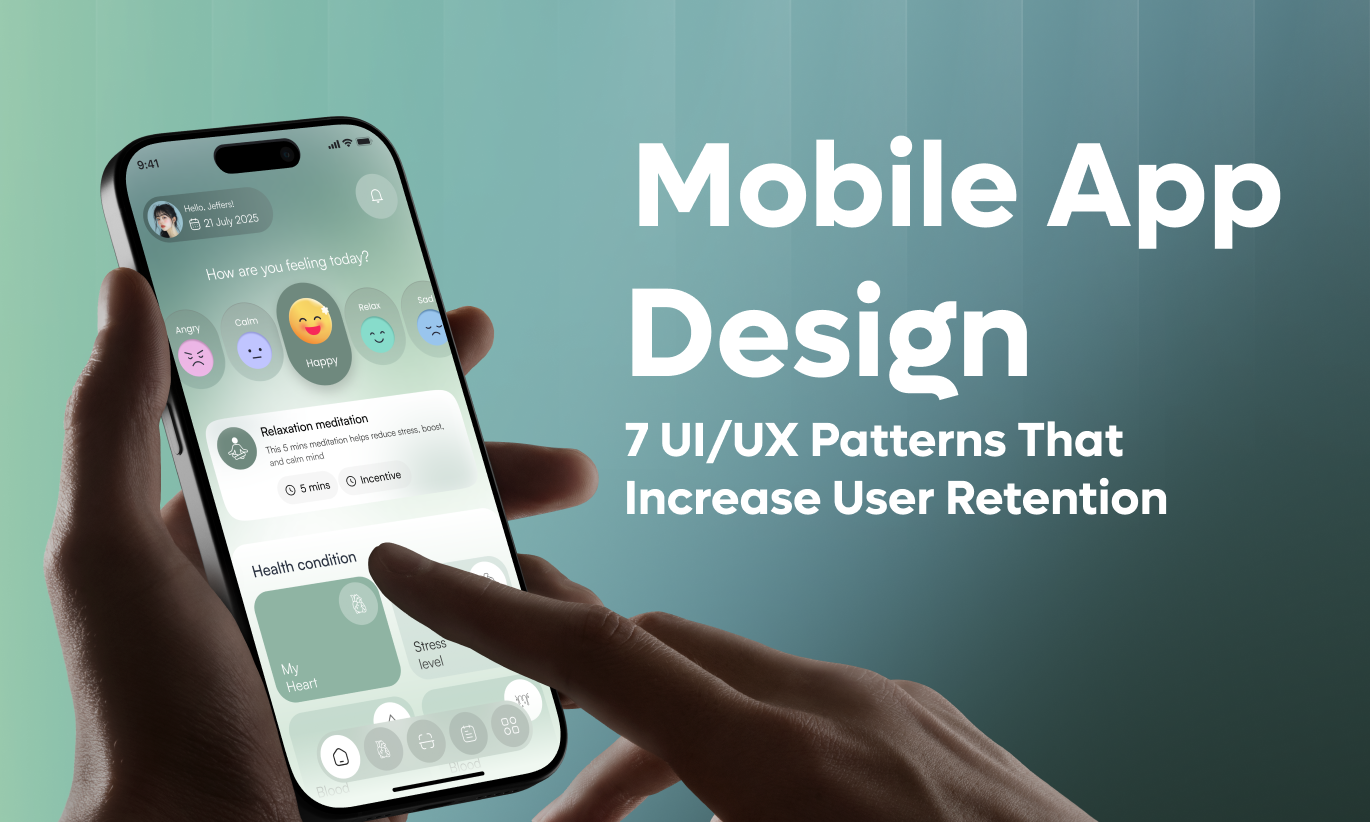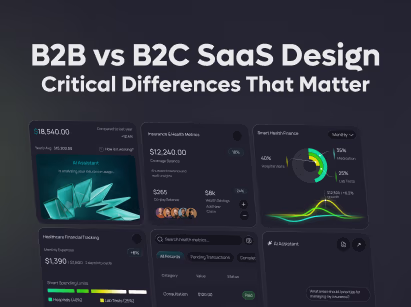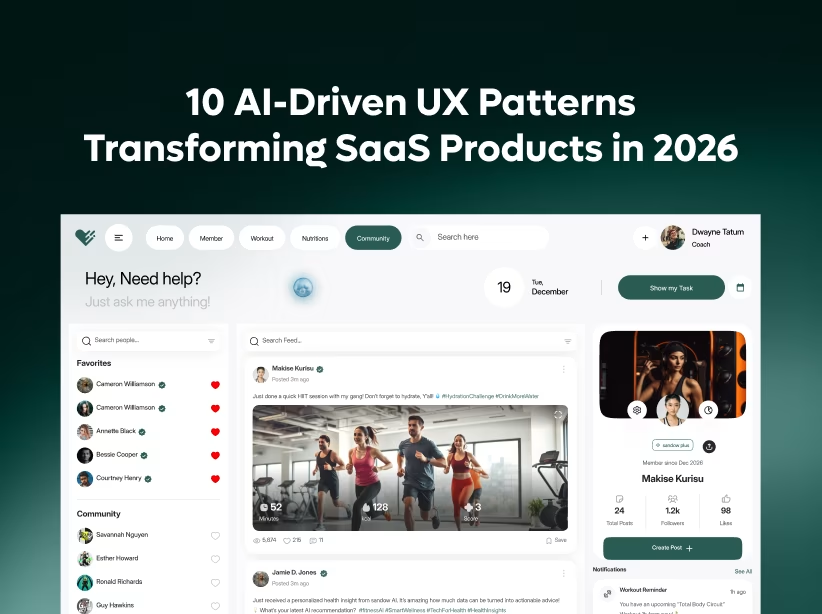Table of Contents
- Understanding Mobile App Retention and Design Impact
- Progressive Onboarding with Contextual Education
- Personalized, Dynamic Content Feeds
- Frictionless Core Workflows with Smart Defaults
- Personalized Re-Engagement Through Smart Notifications
- Measuring Mobile App Design Pattern Success
- Common Mobile App Design Pattern Mistakes
- Conclusion: Design Patterns as Retention Strategy

The average mobile app loses 77% of daily active users within the first three days after install, and 90% within 30 days. This brutal attrition represents millions in wasted acquisition costs and lost revenue potential. Yet some apps achieve retention rates 2-3x higher than industry averages—not through viral features or massive marketing budgets, but through strategic implementation of proven mobile app design patterns that create habit-forming, engagement-driving experiences.
Research consistently shows that mobile app UX patterns directly impact retention metrics. Apps implementing these seven evidence-based design strategies achieve 40-60% higher retention rates, increase session frequency by 2-3x, and generate significantly higher lifetime value per user. The difference between apps users delete and those they can't live without often comes down to thoughtful application of these retention-focused design patterns.
This comprehensive guide reveals seven mobile app design patterns backed by behavioral psychology, validated through thousands of implementations, and proven to increase user retention dramatically across e-commerce, fintech, social, and SaaS applications.
Understanding Mobile App Retention and Design Impact
Before exploring specific patterns, understanding the relationship between design and retention provides crucial context.
What is user retention? The percentage of users who return to your app after their first visit. Day 1 retention measures users returning within 24 hours, Day 7 within a week, and Day 30 within a month. Industry benchmarks: Day 1 (25-30%), Day 7 (10-15%), Day 30 (5-8%).
Why design patterns matter for retention: User behavior is habitual. When mobile app UX patterns align with psychological principles of habit formation, engagement reinforcement, and friction reduction, users integrate apps into daily routines. Poor patterns create friction, confusion, and abandonment regardless of underlying value.
The retention revenue connection: Increasing retention by 5% can increase profits by 25-95%. Retained users generate 5-7x more revenue than new users through higher engagement, word-of-mouth referrals, and premium feature adoption. Every percentage point of retention improvement compounds into significant business value.
Pattern 1: Progressive Onboarding with Contextual Education
Traditional onboarding—lengthy tutorials before users experience app value—kills retention. Progressive onboarding teaches features during actual usage, reducing time-to-value while preventing overwhelming complexity.
The Psychology Behind Progressive Onboarding
Humans learn best through doing, not watching. Front-loading information creates cognitive overload, leading to abandonment before users discover value. Progressive disclosure reveals complexity gradually as users demonstrate readiness, matching education pace to individual learning curves.
Implementation Strategy
Immediate value delivery by opening directly to core functionality rather than tutorial screens. Let users accomplish something meaningful within 30 seconds before introducing complexity.
Contextual tooltips appearing when users first encounter features, explaining functionality at the moment of relevance rather than abstractly upfront.
Interactive tutorials guiding users through actual workflows using real interface elements instead of passive video explanations.
Progressive feature unlocking introducing advanced capabilities after users master basics, preventing overwhelming feature dumps.
Skippable education allowing power users to bypass instruction while ensuring novices receive necessary guidance.
Achievement-based education using gamification to encourage exploration: "Unlock advanced features by completing 5 tasks."
Real-World Success
Duolingo exemplifies progressive onboarding mastery. New users start lessons immediately, learning interface gradually through actual language practice. Tooltips appear contextually when needed. This approach achieves 50%+ Day 1 retention—double industry averages.
Slack introduces features progressively as teams grow. Basic messaging works immediately; advanced features (integrations, workflows, search operators) reveal themselves as users demonstrate sophistication.
Metrics Impact
Apps implementing progressive onboarding see:
- 40-60% higher Day 1 retention versus tutorial-first approaches
- 2-3x faster time-to-first-value reducing early abandonment
- 35-50% better feature adoption through contextual education
Implementation Checklist
✓ Users accomplish core task within 60 seconds of opening app
✓ Tutorial screens skippable with easy resumption later
✓ Tooltips appear contextually, not all at once
✓ Features revealed based on usage patterns, not time
✓ Success celebrated with positive reinforcement
✓ Complex features hidden until users ready
Pattern 2: Habit-Forming Daily Engagement Loops
Apps users open daily become indispensable. Daily engagement loops leverage behavioral psychology to create habitual usage patterns that dramatically improve retention.
The Science of Habit Formation
B.J. Fogg's Behavior Model explains habits form when Motivation × Ability × Prompt converge simultaneously. Mobile app design patterns creating reliable triggers at moments of high motivation and low friction build powerful habits.
Implementation Strategy
Daily streaks showing consecutive usage days motivates maintaining momentum. "Don't break your 14-day streak!" creates loss aversion driving daily opens.
Optimal timing triggers sending notifications when users typically engage based on individual behavior patterns, not arbitrary schedules.
Variable rewards providing unpredictable positive reinforcement (likes, discoveries, achievements) keeping engagement fresh through dopamine activation.
Quick daily wins enabling meaningful accomplishment in 2-3 minutes, making daily engagement easy even during busy days.
Social accountability through shared progress, challenges, or leaderboards leveraging peer influence reinforcing habits.
Progress visualization showing daily advancement toward goals with satisfying visual feedback.
Real-World Success
Headspace builds meditation habits through streak tracking, daily reminders at personalized times, and 3-10 minute session options accommodating any schedule. Result: 65% weekly active users—exceptional for wellness apps.
Strava creates exercise habits through daily achievement tracking, social sharing, segment leaderboards, and streak celebrations. Users develop ritualistic post-workout app engagement.
Metrics Impact
Habit-forming patterns deliver:
- 50-70% improvement in Day 7 retention as habits solidify
- 3-4x increase in daily active user ratio through habitual opens
- 45-60% higher engagement frequency driving more sessions
Implementation Checklist
✓ Streak tracking with prominent display and loss warnings
✓ Personalized notification timing based on usage patterns
✓ Daily goal completable in under 5 minutes
✓ Variable reward elements maintaining novelty
✓ Social features enabling accountability
✓ Progress visualization celebrating consistency
Pattern 3: Personalized, Dynamic Content Feeds
Generic, static experiences feel irrelevant. Personalized dynamic content adapts to individual preferences, creating unique value propositions that make switching to competitors unattractive.
The Power of Personalization
Users expect apps knowing their preferences, anticipating needs, and surfacing relevant content proactively. Personalization increases perceived value, reduces cognitive load of filtering irrelevant information, and creates network effects where apps improve with continued usage.
Implementation Strategy
Behavioral learning analyzing interaction patterns to understand preferences without explicit configuration.
Collaborative filtering recommending content based on similar users' preferences leveraging collective intelligence.
Content diversity balancing personalization with discovery, preventing filter bubbles while maintaining relevance.
Adaptive interfaces prioritizing frequently used features and hiding rarely touched functionality based on individual behavior.
Contextual awareness incorporating time, location, device state, and recent activity into content curation.
Progressive personalization improving recommendations over time, creating sunk-cost psychology discouraging app abandonment.
Real-World Success
Spotify achieves 92% retention through hyper-personalized playlists (Discover Weekly, Daily Mix, Release Radar) that improve continuously. Users invest in training algorithms through listening, creating switching costs.
TikTok masters feed personalization, learning preferences within minutes through sophisticated algorithm analyzing watch time, interactions, and content patterns. Endless relevant content drives addictive engagement.
Metrics Impact
Personalized experiences generate:
- 30-45% higher retention rates through increased relevance
- 2-3x longer session durations driven by continuous relevant content
- 40-55% improved feature adoption through smart recommendations
Implementation Checklist
✓ Machine learning analyzing user behavior patterns
✓ Recommendation engine surfacing relevant content
✓ Interface adapting to individual usage patterns
✓ Diversity mechanisms preventing over-filtering
✓ Transparent personalization controls for user agency
✓ Performance improving noticeably over time
Pattern 4: Frictionless Core Workflows with Smart Defaults
Every unnecessary tap, field, or screen costs users and drives abandonment. Streamlined workflows with intelligent defaults respect user time, creating efficiency that increases engagement frequency.
The Friction Cost Equation
Users abandon workflows exponentially as steps increase. Each additional tap reduces completion rates 5-10%. Eliminating friction isn't just convenience—it's retention strategy.
Implementation Strategy
Minimal input requirements requesting only essential information, collecting additional data progressively when necessary.
Smart defaults pre-populating fields with intelligent predictions based on context, history, or common patterns.
Single-screen flows consolidating multi-step processes into cohesive single-page experiences using progressive disclosure.
Auto-fill everywhere leveraging device capabilities, saved preferences, and previous entries eliminating repetitive typing.
Gestural efficiency enabling swipe actions, long-press menus, and drag-and-drop replacing multi-tap workflows.
Inline validation providing immediate feedback preventing errors rather than requiring re-entry after submission.
Persistent state saving progress automatically so users can pause and resume without losing work.
Real-World Success
Amazon perfected one-tap purchasing through saved payment methods, addresses, and preferences. Reduced friction increased mobile conversion rates 40%+ versus traditional checkout.
Uber exemplifies workflow efficiency: saved locations, payment methods, and pickup detection mean requesting rides takes literally two taps. Friction elimination made ride-hailing habitual.
Metrics Impact
Frictionless workflows drive:
- 35-50% higher task completion rates through reduced abandonment
- 2-3x increase in repeat action frequency when tasks become effortless
- 25-40% improvement in user satisfaction from respecting user time
Implementation Checklist
✓ Core workflows completable in under 3 taps
✓ Smart defaults reduce manual input 60%+
✓ Inline validation prevents submission errors
✓ Auto-save maintains progress without explicit saving
✓ Gestural shortcuts available for frequent actions
✓ Previous selections remembered intelligently
Pattern 5: Strategic Gamification with Meaningful Progress
Gamification done right creates engaging progression systems. Done poorly, it feels manipulative. The key: making progress meaningful and aligned with real value, not arbitrary points.
Gamification Psychology
Humans are intrinsically motivated by progress, achievement, and mastery. Well-designed gamification taps into these drives, making continued engagement rewarding beyond practical utility.
Implementation Strategy
Clear progression systems showing advancement toward mastery with visual indicators (levels, badges, progress bars).
Meaningful achievements tied to actual skill development or value creation, not just usage volume.
Social comparison (optional) enabling users to benchmark progress against peers for competitive motivation.
Unlockable features revealing advanced capabilities as users demonstrate competence, creating aspirational goals.
Variable milestone rewards providing unexpected bonuses at achievement moments amplifying satisfaction.
Progress visualization making abstract improvement concrete through charts, statistics, and comparisons.
Streak maintenance encouraging consistent engagement through loss aversion psychology.
Real-World Success
LinkedIn profile completion gamification ("Strengthen your profile") drives 20x higher profile completion rates. Progress bar taps into completion psychology, and "All-Star" status provides social proof.
Fitbit achievement badges, daily step goals, and activity streaks transform abstract health improvement into concrete gamified progression. Users stay engaged pursuing digital achievements representing real fitness gains.
Metrics Impact
Strategic gamification achieves:
- 40-55% increase in feature engagement through progression motivation
- 30-45% higher retention driven by invested progress
- 2-3x improvement in daily active usage from habit-forming streaks
Implementation Checklist
✓ Progress systems tied to actual value, not vanity metrics
✓ Clear visual progress indicators prominently displayed
✓ Achievement notifications celebrating milestones
✓ Unlockable features creating aspirational goals
✓ Social elements optional, not mandatory
✓ Variable rewards maintaining engagement novelty
Pattern 6: Seamless Social Integration and Sharing
Apps with social features benefit from network effects: value increases with more connections. Social integration transforms individual experiences into community engagement, dramatically improving retention.
The Network Effect Advantage
Social features create switching costs—leaving means abandoning community connections. Apps become stickier when friends and colleagues use them, and viral sharing reduces customer acquisition costs while improving retention.
Implementation Strategy
Frictionless sharing enabling effortless content distribution with pre-formatted messages and one-tap posting.
Activity feeds showing friend actions, achievements, and content creating social context and FOMO (fear of missing out).
Collaborative features enabling real-time co-creation, shared goals, or multiplayer experiences.
Social proof displaying connections' engagement, recommendations, and achievements influencing behavior through peer modeling.
Easy invitations making friend/colleague invitations seamless through contact integration and social login.
Privacy controls providing granular sharing preferences ensuring users feel safe, not exposed.
Engagement notifications alerting users when connections interact with their content driving reciprocal engagement.
Real-World Success
Strava thrives on social features: segment leaderboards, kudos, activity comments, and challenge competitions. Social engagement drives 60%+ higher retention versus solo usage.
Pinterest social discovery (following, boards, collaborative boards) creates network effects making the platform more valuable as connections grow. Social users exhibit 3x higher retention.
Metrics Impact
Social integration delivers:
- 50-70% higher retention for socially connected users versus solo
- 3-5x more frequent engagement driven by social notifications
- 40-60% viral coefficient through organic sharing reducing CAC
Implementation Checklist
✓ One-tap content sharing to major platforms
✓ Activity feed showing connection engagement
✓ Collaboration features enabling shared experiences
✓ Easy friend/colleague invitation flows
✓ Privacy controls providing user agency
✓ Social notifications driving reciprocal engagement
Pattern 7: Personalized Re-Engagement Through Smart Notifications
Strategic notifications bring churning users back. Poor notifications drive uninstalls. The difference lies in personalization, value, and timing.
Notification Science
Well-timed, valuable notifications increase retention 25-40%. Excessive or irrelevant notifications increase churn 30-50%. The balance requires sophisticated personalization and restraint.
Implementation Strategy
Behavioral triggers sending notifications based on actual behavior patterns, not arbitrary schedules: "You haven't logged a meal today" (after typical logging time).
Value-first content providing genuinely useful information rather than generic engagement begging: "Your package shipped" versus "Open the app."
Personalized timing learning optimal notification times for each user through analysis of historical engagement patterns.
Frequency capping limiting daily notifications preventing overwhelming users regardless of available content.
Action-oriented design enabling task completion directly from notification without requiring full app open.
A/B testing continuously optimizing notification copy, timing, and triggers based on engagement data.
Easy opt-out providing granular notification controls and respecting preferences preventing frustrated uninstalls.
Real-World Success
Calm meditation app uses personalized reminder timing based on when users typically meditate. Contextual messages ("Time for your evening meditation?") at learned optimal times achieve 45% open rates versus 8% industry average.
Asana task management sends notifications only for personally relevant updates at times when users typically check tasks, achieving high engagement without notification fatigue.
Metrics Impact
Smart notifications drive:
- 30-45% improvement in re-engagement bringing inactive users back
- 25-40% increase in daily active users through strategic prompting
- 50-70% reduction in uninstalls from notification abuse
Implementation Checklist
✓ Behavioral triggers based on usage patterns
✓ Personalized timing using individual engagement data
✓ Value-first content providing genuine utility
✓ Actionable notifications enabling in-notification task completion
✓ Frequency caps preventing overwhelming volume
✓ Granular opt-out controls respecting preferences
Measuring Mobile App Design Pattern Success
Track these metrics validating pattern effectiveness:
Retention metrics:
- Day 1, 7, 30 retention rates (primary KPIs)
- Cohort retention curves over time
- Churn rate and reasons
- Reactivation success rates
Engagement metrics:
- Daily/weekly active user ratios
- Session frequency and duration
- Feature adoption and usage depth
- Screens per session
Behavioral metrics:
- Time to first value completion
- Core action completion rates
- Workflow abandonment points
- Feature discovery rates
Business metrics:
- Customer lifetime value (LTV)
- Retention-driven revenue
- Viral coefficient from social features
- Customer acquisition cost (CAC) payback period
Implementation Roadmap
Phase 1: Audit (Weeks 1-2)
- Baseline current retention metrics
- Identify biggest friction points
- Analyze user behavior patterns
- Prioritize pattern implementations
Phase 2: Quick Wins (Weeks 3-6)
- Implement frictionless workflow improvements
- Add progressive onboarding elements
- Optimize notification strategy
- Launch streak/progress tracking
Phase 3: Strategic Patterns (Weeks 7-12)
- Build personalization engine
- Develop gamification system
- Integrate social features
- Create habit-forming loops
Phase 4: Testing & Optimization (Weeks 13-16+)
- A/B test pattern variations
- Monitor retention impact
- Iterate based on data
- Scale winning patterns
Common Mobile App Design Pattern Mistakes
Over-gamification adding points, badges, and levels without meaningful progress creates manipulative feel driving user cynicism.
Notification spam sending excessive alerts for every trivial update trains users to ignore or uninstall.
Forced social requiring social features for basic functionality alienates users preferring private experiences.
Complex onboarding explaining everything upfront overwhelms users before they experience value.
Generic personalization showing same content to everyone defeats personalization purpose and value.
Friction creep gradually adding steps to workflows as features expand without optimization.
Ignoring feedback implementing patterns without measuring impact or responding to user preferences.
Industry-Specific Pattern Applications
E-Commerce Apps:
- Priority: Frictionless checkout, personalized recommendations, strategic notifications for abandoned carts
- Key metrics: Conversion rate, repeat purchase rate, average order value
Social Apps:
- Priority: Network effects, daily engagement loops, seamless sharing, activity feeds
- Key metrics: DAU/MAU ratio, social connections per user, viral coefficient
Fintech Apps:
- Priority: Habit-forming daily checks, progress visualization, smart notifications for important transactions
- Key metrics: Transaction frequency, account balance checks, feature adoption
Health & Fitness Apps:
- Priority: Streak tracking, achievement gamification, social accountability, progress visualization
- Key metrics: Workout frequency, streak length, goal completion rate
Productivity Apps:
- Priority: Frictionless workflows, smart defaults, progress tracking, collaboration features
- Key metrics: Task completion rate, daily active usage, feature depth
Conclusion: Design Patterns as Retention Strategy
Mobile app design patterns aren't decorative choices—they're strategic retention levers directly impacting business outcomes. Apps implementing these seven evidence-based patterns consistently achieve 40-60% higher retention rates, transforming economics through reduced churn and increased lifetime value.
The difference between apps users delete within days and those they can't live without comes down to thoughtful application of proven psychological principles through strategic design patterns: progressive onboarding that respects learning curves, habit-forming loops that create daily rituals, personalization that increases relevance, frictionless workflows that respect time, meaningful gamification that drives mastery, social integration that creates switching costs, and smart notifications that re-engage without annoying.
Every pattern implemented compounds retention improvements, creating sustainable competitive advantages competitors cannot easily replicate. The investment in strategic mobile app UX patterns delivers returns many multiples beyond acquisition spending alone.
At Orbix Studio, we specialize in retention-focused mobile app design implementing these proven patterns tailored to your specific user behaviors, business model, and competitive landscape. Our data-driven approach combines behavioral psychology, interaction design expertise, and rigorous testing to build apps users genuinely can't live without.
Ready to increase your mobile app retention by 40-60%?
Free Mobile App Retention Audit
Get a complimentary retention optimization analysis:
✓ Current retention funnel analysis and benchmarking
✓ Pattern implementation gap assessment
✓ Prioritized recommendations by impact potential
✓ Custom retention improvement roadmap
✓ Estimated retention lift from recommended patterns
✓ Competitive pattern analysis
Limited to 5 apps monthly | Average audit value: $5,000
Fresh UI/UX Ideas, Straight to Your Inbox





